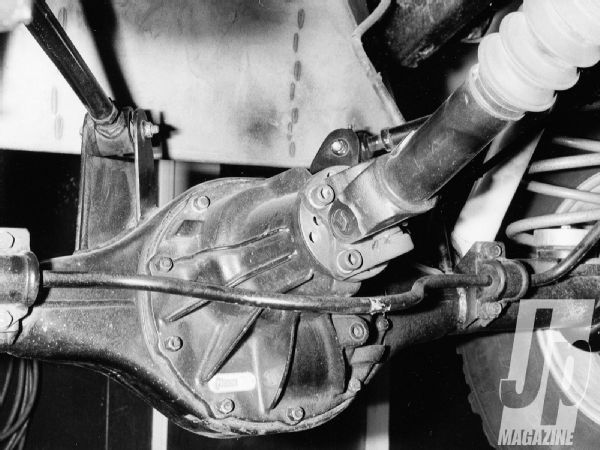 Rick Péwé
Editor-in-Chief, 4Wheel & Off-Road
Rick Péwé
Editor-in-Chief, 4Wheel & Off-Road
Most hard-core Jeep enthusiasts know about Currie 9-inch rearends for Jeeps and other rigs. In fact, on almost any given trail ride throughout the nation, you can probably find one (or two) of the custom diffs residing under a built-up Jeep.
For years, Currie's custom Ford 9-inch differentials have been legendary in Jeeps, hot rods, and other performance applications, with a plethora of aftermarket gear ratios, housings, and lockers that fit them.

But regardless of the durability of the 9-incher, the low-pinion placement can cause driveline angle problems for lifted Jeeps and those that require lots of axle travel. One common cure is the popular high-pinion reverse-rotation Dana 44 and 60 axles found in the front of some Ford products. These axles have the pinion placed above the centerline of the axle tube, and the gears are cut backward to rotate in the correct direction. These high-pinion, reverse-rotation axles are great for improving driveline axles and very popular for making custom-axle swaps. But the drawback is that these axles weren't designed to rotate forward when used in the back of a vehicle, and the oiling of the pinion bearings suffer.
To solve all these problems, Currie Enterprises has come up with an all-new product, the Currie High-Pinion Differential. Designed to be used as a front or rear end, this specially made diff will accept all the 9-inch traction and axle goodies that make it famous, but uses the company's own brand and manufactured center section. The new nodular iron casting uses the durable 8.8-inch ring-and-pinion set found in the front of late-model Fords. The whole assembly fits right into a standard 9-inch housing, which saves some bucks if your Jeep already sports custom 9-inch units.
Currie Enterprises has just expanded again, this time adding a full-service installation and repair facility.
That gave us a chance to photograph the Currie High-Pinion Differentials that were installed in John Curries' new TJ. Check out the new high-pinion unit, and see if it's the ultimate diff for your rig.
PhotosView Slideshow










